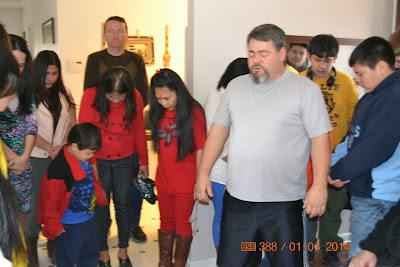by Susan Palmes-Dennis
I LOVE fiestas and today happens to be the feast day of my hometown, Tagoloan in Misamis Oriental, Northern Mindanao, Philippines. In my childhood and even now the word fiesta always brings a smile to my face and my thoughts.
I assume all other Filipinos or those who are Filipino at heart share my thoughts on this. The best dishes, particularly the best torta (short cake) and salad in my childhood were served during fiestas.
Filipinos love fiestas. After all, a fiesta is a special time to bond with friends, a time for fellowship, activities and special food of course. The origin of the Philippine fiestas are rooted back to before the Spanish conquistadores.
But since there are other readers of Straight from the Carolinas who are unfamiliar with the fiesta, allow me to share with you some background or insights, specifically the Tagoloan town fiesta.
Fiestas in the Philippines are held to celebrate a patron saint. The patron saint is believed to be the guardian of the people who believe in its protection.
Every 2nd of February in my town we celebrate the fiesta of our patroness the Nuestra Señora de Candelaria.
Coveted tasks
You see the fiesta has a more religious undertone because of the culture we received from the Spaniards but through the years the fiesta became a blend of the religious and secular or civic.
 |
| Devotees attending church in Tagoloan town. |
As is the case of every fiesta, it is marked with a nine-day novena Mass which in the case of Tagoloan townn started last week and ends on Feb. 2, the feast day itself.
The fiesta also marks that time of the year aside from Christmas when devotees are in church attending the novena Mass. The sacristans are left behind to clean and beautify the altar and the church surroundings.
The responsibilities among church workers like decorating and liturgy are assigned by the parish priest and the most coveted are the cleaning and dressing of the lady icon.
According to my good friend Consuelo Sabio-Caballero, the patroness's dress is sewn in Manila by the sister of Mrs. Nice Yap. From Sueing (Consuelo) the process of changing the clothes of the Virgin Mary is a delicate process that starts with a prayer.
Beauty
Bobby Lee and other choir members do the same. I guess I have to write separately about this topic. Even if you are unfamiliar with the process or Catholicism itself, you would marvel at the beauty of the patroness of Tagoloan.
It is said that everyone wants to be part of this religious process. I am reminded of one person who had been dressing the patroness for years, Nang Gaga Celestina Razalo-Casino, who returned to her Creator weeks ago.
Nang Gaga would love doing this and surely she would be missed this year. The others are kept busy practicing the dances and the songs. Most government employees, officials and students join barangay officials in the parade.
 |
| The Senora Candelaria icon of Tagoloan town |
In those days the parade would start from Tagoloan Central School and then steers to the right of the street heading to the house of Glen Gamber, Vicente Lao, Lola Eging Casino and then my family home.
The parade would then proceed towards the houses of Yo David and Tiay Puring Nabong- Pacheco in the left and then the home of Tioy Memen Dagus at the right.
Pageant
It was a long parade and those tired of walking would search for the nearest tree shade to rest. In my youth, I would join the parade to escape housework and to see which house had the most visitors on the eve of the fiesta.
Every night for the whole fiesta week there would be different activities at the plaza. In the old days there would be dancing until the wee hours of the morning and the Miss Tagoloan pageant.
I can still recall some winning Miss Tagoloan candidates like Manang Erlinda Nabong, Ganging Nabong, Vilma Nabong, Rosalinda and Vicky. They are all sisters and the daughters of Iyo Lino Nabong.
I couldn't remember now if the youngest daughter Jerelyn, who also happened to be my classmate was also Miss Tagoloan.
Of course there was also a Miss Dulce Sabejon, the daughters of the late Iya
Marina of Baluarte, Madoline “Gangga Pacheco”, my neighbor and the younger ones, Urcel Casino who by the way is now in New York, his late sister Zelda and so many others.
The blessing of the candles and the yearly procession of the patroness, the Nuestra Señora de Candelaria and the sumptuous food, I guess I have to continue with it next Saturday. But one thing I am sure about, I love fiestas. Happy Fiesta Tagoloan town.
(This article also appeared in the Feb. 1 online and printed edition of Sun.Star Cagayan de Oro. You can also see my other articles in this web page. The vintage photos were taken from the Facebook page Karaang Tagoloan while the photos inside the church were taken by my daughter.)



















